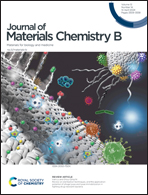Review on sterilization techniques, and the application potential of phage lyase and lyase immobilization in fighting drug-resistant bacteria
Abstract
Many human health problems and property losses caused by pathogenic contamination cannot be underestimated. Bactericidal techniques have been extensively studied to address this issue of public health and economy. Bacterial resistance develops as a result of the extensive use of single or multiple but persistent usage of sterilizing drugs, and the emergence of super-resistant bacteria brings new challenges. Therefore, it is crucial to control pathogen contamination by applying innovative and effective sterilization techniques. As organisms that exist in nature and can specifically kill bacteria, phages have become the focus as an alternative to antibacterial agents. Furthermore, phage-encoded lyases are proteins that play important roles in phage sterilization. The in vitro sterilization of phage lyase has been developed as a novel biosterilization technique to reduce bacterial resistance and is more environmentally friendly than conventional sterilization treatments. For the shortcomings of enzyme applications, this review discusses the enzyme immobilization methods and the application potential of immobilized lyases for sterilization. Although some techniques provide effective solutions, immobilized lyase sterilization technology has been proven to be a more effective innovation for efficient pathogen killing and reducing bacterial resistance. We hope that this review can provide new insights for the development of sterilization techniques.

- This article is part of the themed collection: Journal of Materials Chemistry B Recent Review Articles


 Please wait while we load your content...
Please wait while we load your content...